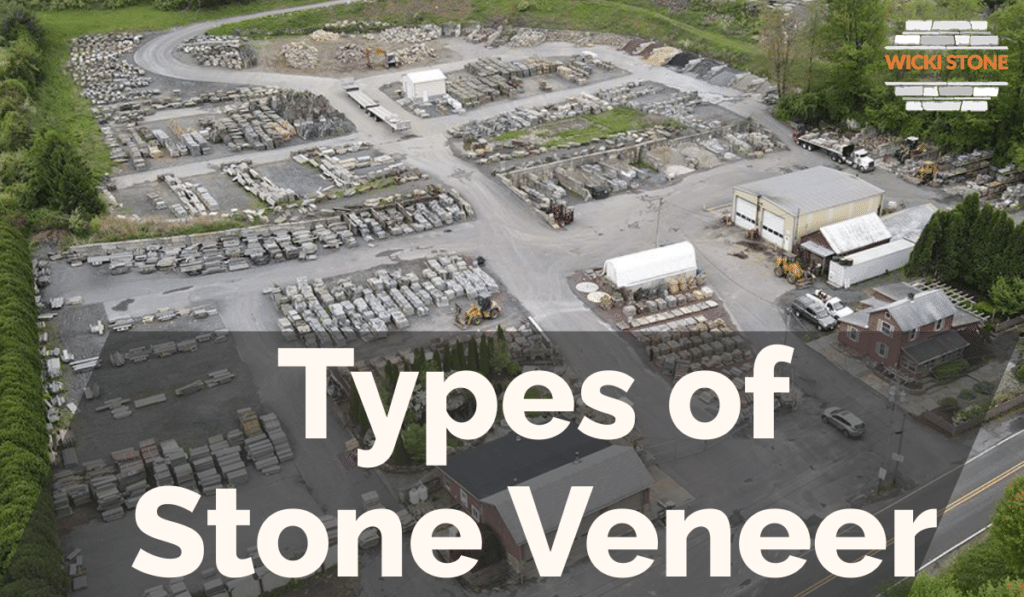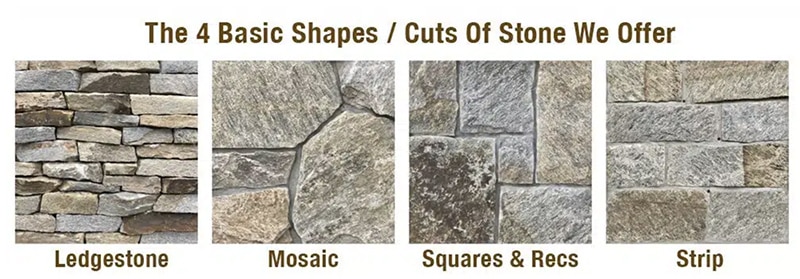
Types of Stone Veneer
Stone veneer is a popular choice for modern home and building renovations, providing an aesthetic appeal that balances both luxury and natural looks. When it comes to veneers, natural stone stands in a class of its own, offering a range of unique designs and, its adaptability makes it a preferred choice for many construction projects. This article will guide you through different types of natural stone veneers and their unique characteristics.
What is a Stone Veneer?
Stone veneer is a layer of any stone used as a decorative surface. Natural stone veneers include those made of actual stone, which is cut into thin slices to reduce weight and make them more manageable and adaptable for many types of projects. Stone veneer can further be classified as Thin Veneer or Full Size Veneer (Wicki Wholesale Stone sells both). Natural Thin Veneer Stone is defined in part by how thick it is – with .75 to 1.5″ being the most common range and Full Size Veneer is defined as 3″ thick or thicker. Full size Veneer stone needs a special foundation if it is to clad the outside of the structure (it is called a foundation shelf) as the weight of Full Size Veneer Stone is very substantial.
Styles of Stone Veneer
Thin Veneer Natural Stone comes in different shapes and colors. You will have to decide what shape you want and what color. Stone veneer comes in a variety of shapes, each with its unique appearance and characteristics. Here are some of the most commonly used stone veneer shapes:
-
Ledgestone
Ledge stone features a unique arrangement of rectangles and squares, which gives a stacked look. Pieces are typically of modest height, so you have layers of stone. The is relatively easy stone to work with given the modest size pieces. The look can be rugged as different pieces will have different depths. It’s preferred for fireplaces, outdoor kitchens, accent walls and more.
-
Mosaic
Mosaic stone offers a traditional look with its irregular shapes that create a rustic and old-world feel. Great for a variety of settings such as residential siding, fireplaces indoors and out, retaining walls and fireplaces.
-
Squares and Recs (Sometimes called Ashlar Stone or Castlestone)
Squares and Recs refers to square and rectangular pieces of this stone. The edges are typically well defined and reasonably straight. It is a more modern choice with clean lines and a sleek, yet classic look. Ideal for fireplaces, commercial building facades and residential exteriors.
-
Strip
Split face stone features are primarily rectangular with pieces that are larger than Ledgestone, but smaller than Square’s and Recs – think of Strip as medium size squares and recs. The look can very clean and organized. Ideal for a full range of veneer applications.
Maintaining Stone Veneer
No matter your choice of stone veneer, regular maintenance is recommended to maintain its unique aesthetic properties over its lifetime. It’s recommended to clean stone veneer at least once a year with a pressure washer set at a low psi or with a soft brush. This may not be needed if the stone is outside and in a sunny location. Like many siding materials – there may be a green tint from Moss or Algae on the shaded size of a home. Both are easily removed with a pressure washer
Frequently Asked Questions
Is stone veneer durable?
Yes, natural stone veneer, when properly installed and maintained, can last for many years without losing its pleasing aesthetic. Full Size Veneer has been in use for centuries and the durability of stone this thick is almost endless. Natural Thin Veneer stone is a relatively new product (widespread use within the last 2 or 3 decades) so it is not possible to say it will last centuries, but quality Thin Veneer Stone will likely last many, many decades.
Can stone veneer be installed directly onto surfaces?
In most cases – no. The surface requires prep – especially if the stone is used outside, and especially if used against wood siding. Multiple layers of waterproofing materials are typically recommended in exterior applications. However, they can typically be applied directly onto clean concrete block or a concrete wall or other masonry surfaces. For painted or sealed surfaces, additional steps might be required.
Should Stone Veneer Be Sealed?
We do not recommend indoor thin veneer be sealed unless it is exposed to water. Outdoor stone veneer is your choice. Opinions differ widely – we recommend you research the subject carefully. The thinner the stone – the more helpful sealer might be. Imported stone is sometimes thinner than stone quarried in the United States.
Conclusion
Stone veneer gives your property a natural and timeless appeal. Choosing the right one depends on the desired design and the specific needs of the project. So, whether it is the rustic charm of the round field stone or classic look of mosaic patterns.
If you are looking to purchase veneer stone – Thin or Full Sized – Wicki Wholesale Stone Inc. has a vast selection of in-stock veneer stone that is ready to be brought home or to the job site. To learn more about or in-stock Thin veneer Stone please visit this link.

